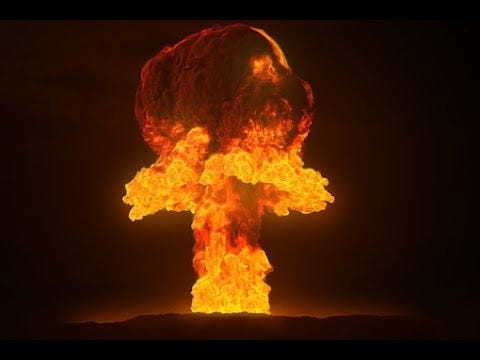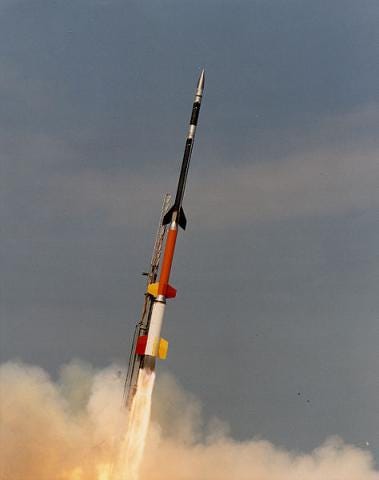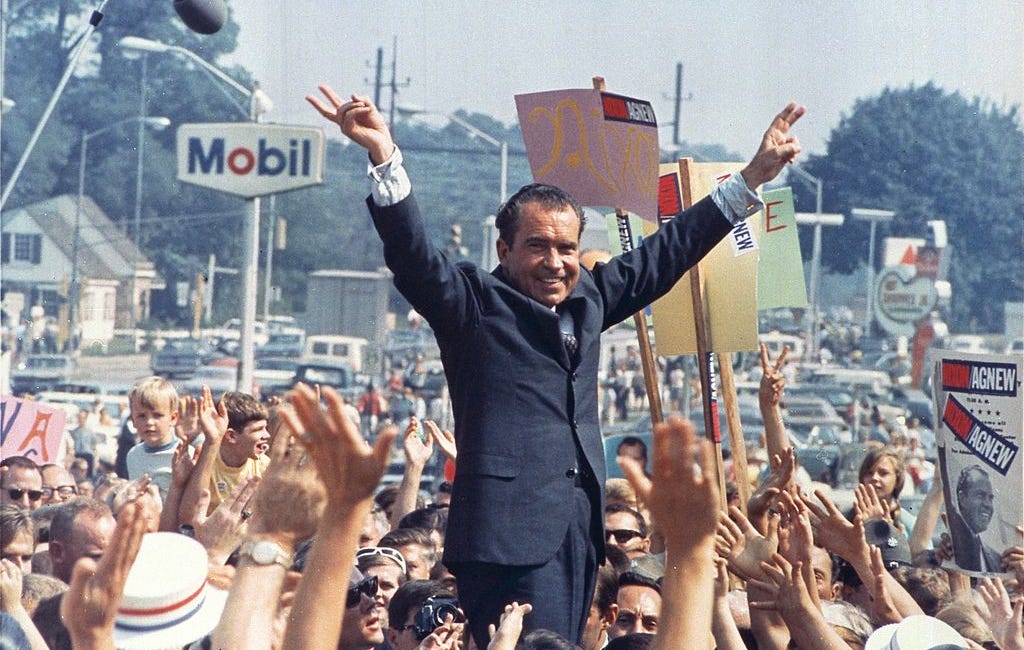Yeltsin was sober, the world was saved
The former Russian President was the first ever political leader to activate a "nuclear briefcase" with the infamous button. Thankfully, his finger didn't budge.
After nuclear escalation reached a peak in the mid-80s, with more than 70,000 weapons worldwide, successive treaties greatly reduced the deadly arsenal. The unexpectedly sudden end of the Cold War put an end to the Soviet Union and the risk of an apocalyptic conflict. Right?
Wrong.
Unstringed puppet
President Boris Yeltsin, who ruined Russia with a neoliberal “shock therapy”, looked like the best puppet the United States could have in the Kremlin. And most of the time he was. So it came as a huge surprise the revelation that Yeltsin came closer than any other leader in history to start a nuclear war, striking America with nuclear missiles.
And no, he wasn’t drunk. Thank God.
As so often happened during the Cold War, nuclear Armageddon was almost triggered by a ridiculous accident or misunderstanding. On January 25, 1995, Russian early-warning radars mistook a harmless research rocket launched from Norway for an American nuclear ballistic missile.
The multistage rocket Black Brant XII was part of a joint Norwegian-American scientific project to study the northern lights. What alarmed the Russians was the rocket’s trajectory, whose pattern was similar to that of a submarine-launched ballistic missile (SLBM).
Worse still, once the rocket started jettisoning its stages, to the Russians it looked like a MIRVed missile. MIRV stands for Multiple Independently Targetable Reentry Vehicle, and this mouthful means that the missile in question can launch many nuclear warheads, with independent targets. A nightmare for air-defence systems.
Yes, people spend their time creating these things.

A state of high alert ensued, and Yeltsin was given his nuclear briefcase — the device that allows the President to order a nuclear strike (American Presidents use a similar one, known as the “football”).
Devil in a briefcase
There were three briefcases: the Minister of Defence and the Chief of the General Staff had the other two. The ultimate decision would be made by the President, who is also the Supreme Commander-in-Chief of the Armed Forces.
The briefcase was opened and Yeltsin activated the keys. Never before had a world leader stared at a button that could potentially destroy most of the planet. Thousands of warheads were about to be unleashed. Russian submarines went into combat readiness. It was just a matter of time.
It took eight long minutes to finally confirm that Russia was not being attacked. (Not so) fun fact: Norwegian authorities had informed their Russian counterparts about the test one month before. The message, lost in a bureaucratic labyrinth, never reached the radar operators.
No biggie?
In a press conference afterwards, Yeltsin matter-of-factly admitted that the briefcase from hell was indeed ready to be used.
“Yesterday I used the black briefcase I always have with me for the first time. I had them with me yesterday morning and immediately called the Minister of Defence. We watched closely and found out where and when the rocket was going to land. We followed it from beginning to end.”
It was an attempt to dedramatize a situation that could have had (literally) explosive consequences. But many details remain obscure to this day.
What really happened?
Perhaps we’ll never know exactly what took place in the top echelons of the Russian government. There are many conflicting interpretations.
According to CIA veteran Peter Pry, author of War Scare, a book about nuclear near misses, it was “the single most dangerous moment of the nuclear missile age”.
“Never before had a leader of any nuclear power opened his equivalent of the Russian ‘nuclear briefcase’ in earnest, in a situation where a real threat was perceived, and where an immediate decision to launch Armageddon was possible.”
This is disputed by those who believe that the incident was quickly solved and never got close to a launch order. But the risk is always there. According to Pavel Podvig, from UNIDIR (United Nations Institute for Disarmament Research),
“Although there is evidence that the danger of that particular incident has been seriously exaggerated, there is no doubt that launch-on-warning postures of US and Russian nuclear forces create risk of an accidental or inadvertent launch. Even if we can argue that the probability of this kind of launch is extremely small, its consequences would be devastating and hardly anyone is ready to argue that this is the risk worth taking.”
Failures of communication, together with the readiness to launch after a warning is received, can lead to catastrophe. It almost happened too many times already, and the danger is growing by the day, now that a kind of Cold War 2 is going on.
The incident occurred during a period of heightened tension between Russia and the West. The First Chechen War was raging, and the Russian leadership resented the international condemnation. But in the end, credit where it’s due. Yeltsin was sober enough to keep his finger off the button. Yet another example of one of the most important rules any leader should follow:
A neoliberal nightmare
TraumaZone is a seven-part documentary by acclaimed director/producer Adam Curtis, about the tragedy that befell Russia during Yeltsin’s tenure. A misguided economic “shock therapy”, pursued under the guidance of American economists and their Russian accomplices, ravaged the country. By the end of the century, Russia’s GDP was 30% below the value it had in the final throes of the Soviet Union. Poverty afflicted 40% of the population (against 2% in the late Soviet era). Oligarchs took control of hastily privatized public assets, while millions of people lost everything — pensions, savings, jobs, health, dignity, and even their lives.
That’s neoliberalism for you. You’ll own nothing and definitely won’t be happy.










